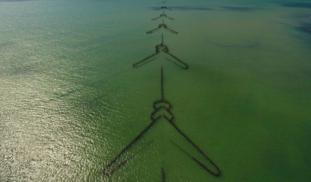Please wait...
About This Project
Sawfish are one of the most endangered fish in the world, and Atlantic tarpon are considered vulnerable. Both fish move into salty and fresh water, but we don't understand these movements. Knowing more could help identify ways to protect both species. Luckily, tarpon scales and sawfish rostral teeth store chemistry that can reconstruct the movements they make. We hypothesize that teeth and scales will allow is to reconstruct the movements of both fish in a non-lethal way.
More Lab Notes From This Project

Browse Other Projects on Experiment
Related Projects
Using eDNA to examine protected California species in streams at Hastings Reserve
Hastings Reserve is home to three streams that provide critical habitat for sensitive native species. Through...
City smart: Are cities making birds smarter?
One cannot go to Florida and miss the White Ibises roaming golf, park and private lawns. But how does a...
How do polar bears stay healthy on the world's worst diet?
Polar bears survive almost entirely on seal fat. Yet unlike humans who eat high-fat diets, polar bears never...




